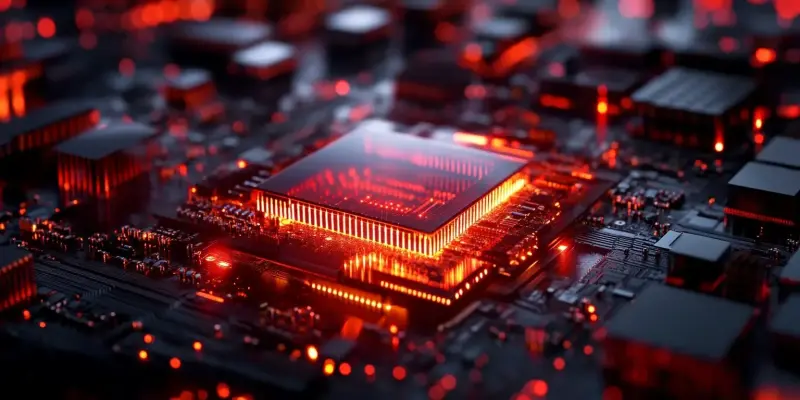The rise of artificial intelligence servers is reshaping the technology landscape, but it has also introduced new challenges for dedicated gamers.Since their launch, the GeForce RTX 5090 GPUs have been highly sought after, not just by gamers but now increasingly by enterprises focused on AI workloads. Vietnamese retailer Nguyencongpc is one such company building AI servers equipped with up to seven GeForce RTX 5090 GPUs. These servers leverage the higher memory capacity of these GPUs to suit non-gaming tasks, using their advanced capabilities for intensive AI computations.
The Appeal of the GeForce RTX 5090
A distinctive feature that sets the RTX 5090 apart from its predecessors is its 32 GB of memory, which significantly enhances its performance for AI applications. This makes it particularly desirable for AI tasks that require large memory capacities, enabling more efficient data processing and machine learning computations. Nguyencongpc has capitalized on this advantage, constructing AI servers despite the overall market shortage.Some configurations use up to seven RTX 5090 GPUs, drawing nearly 4000W of power, while other setups use two MSI RTX 5090 GPUs to cater to less intensive AI requirements. Such advanced configurations underline the high dependence on top-tier hardware, including the ROG Crosshair X870E Hero motherboard for the dual GPU setups.
Financial and Supply Chain Implications
The financial outlay for these AI servers is considerable, with costs ranging from approximately $10,000 for dual RTX 5090 rigs to exceeding $30,000 for configurations featuring seven GPUs. Given that each RTX 5090 unit costs around $2500 to $3000, this high demand further exacerbates the limited supply in the market.The tight GPU availability reminiscent of the earlier GPU mining booms of 2018 and 2021 is being felt again, though this time driven by AI, not cryptocurrency. While professional GPUs with higher VRAM capacities, such as the RTX 4090 with 48 GB, are available, these are less effective for gaming purposes, thus maintaining the popularity of the RTX 5090 among diverse user groups.This increased demand for high-memory gaming GPUs to power AI servers could indeed strain the supply pipeline of RTX 5090s, echoing the scarcity issues experienced with previous GPU series. The ongoing dilemma highlights that despite considerable advancements in GPU technology, gamers remain in a perpetual struggle for accessible hardware.
Future Considerations for Gamers and AI Enthusiasts
The emergence of artificial intelligence servers is transforming the technological scene, bringing forth new challenges, especially for hardcore gamers. The GeForce RTX 5090 GPUs have been in high demand since their release, attracting not only gamers but also businesses focusing on AI tasks. Vietnamese retailer Nguyencongpc exemplifies this shift, as they are developing AI servers that incorporate up to seven GeForce RTX 5090 GPUs. These servers utilize the extensive memory capacity of these GPUs, adapting them for non-gaming purposes such as complex AI computations.This development highlights a significant trend where high-performance gaming hardware is increasingly adopted for enterprise AI applications. Though initially intended for gaming, the GPUs’ powerful features make them highly suitable for handling demanding AI workloads. This cross-purpose usage signifies a growing intersection between gaming technology and artificial intelligence advancements, revealing a broader potential for high-end GPUs in various sectors beyond entertainment.

